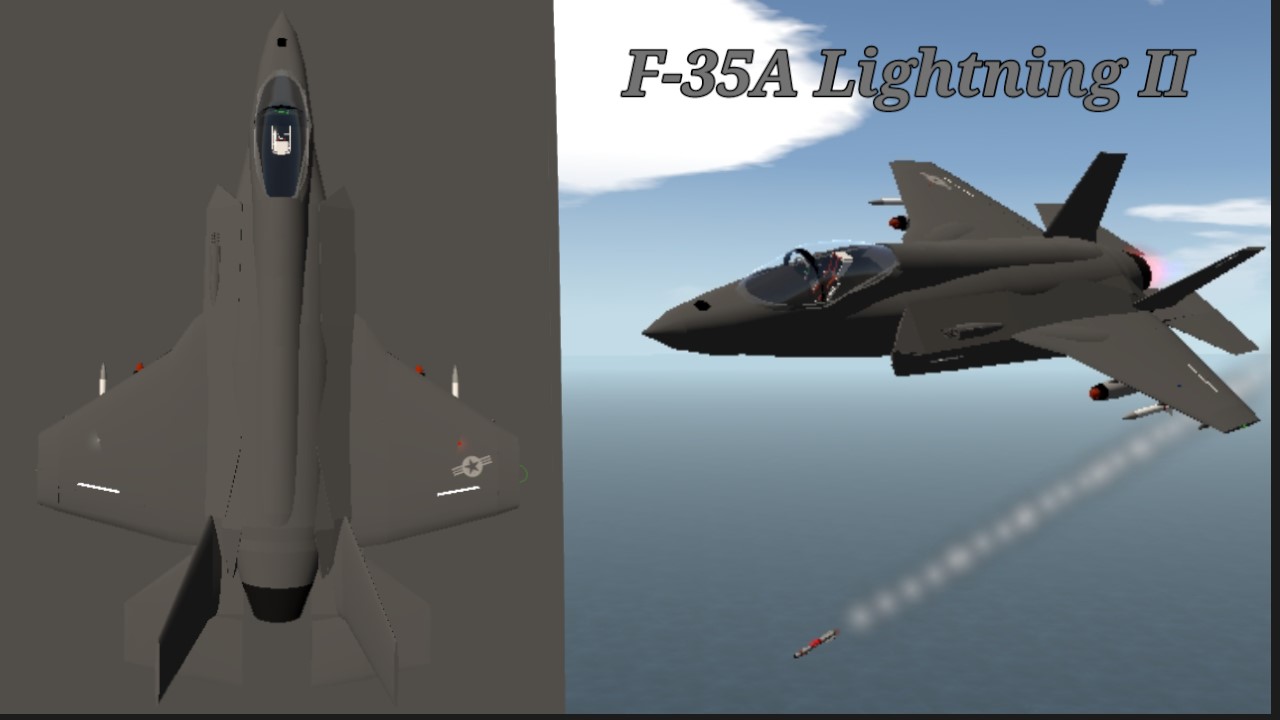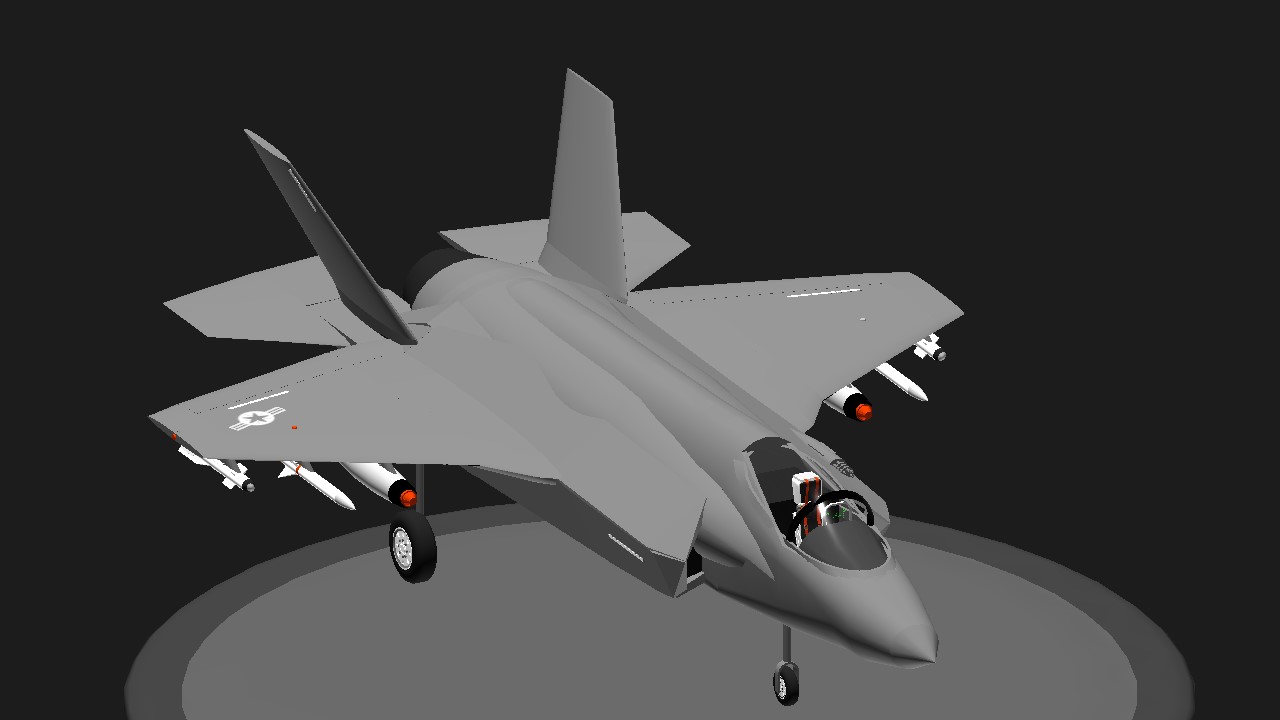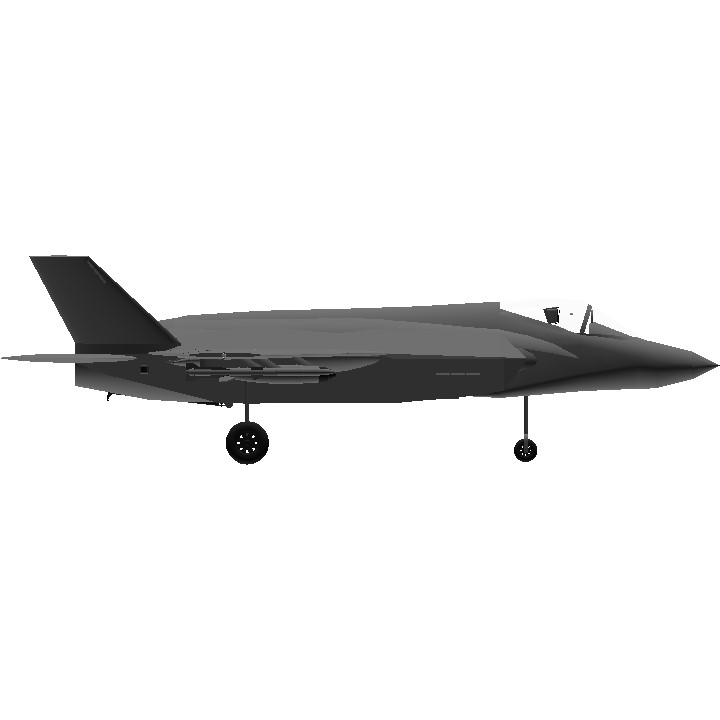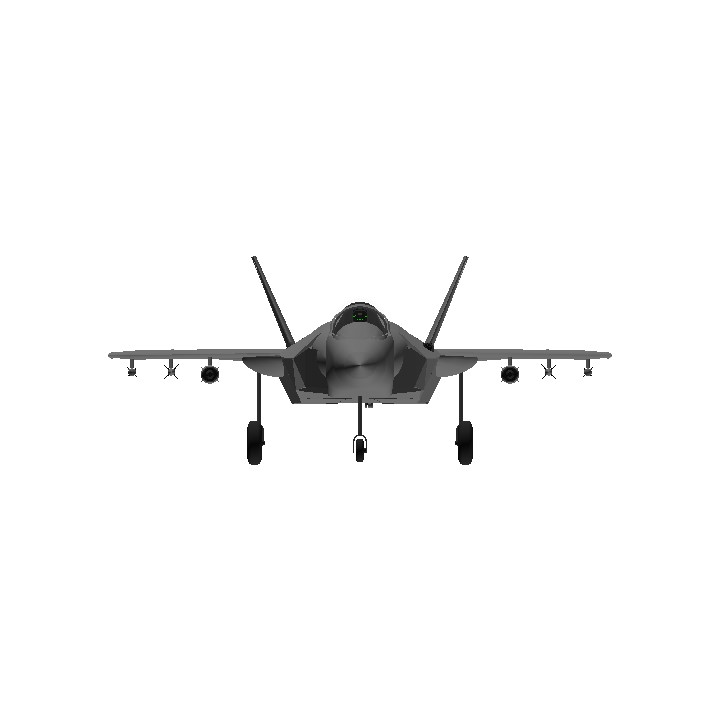Mission
The F-35A is the U.S. Air Force’s latest fifth-generation fighter. It will replace the U.S. Air Force’s aging fleet of F-16 Fighting Falcons and A-10 Thunderbolt II’s, which have been the primary fighter aircraft for more than 20 years, and bring with it an enhanced capability to survive in the advanced threat environment in which it was designed to operate. With its aerodynamic performance and advanced integrated avionics, the F-35A will provide next-generation stealth, enhanced situational awareness, and reduced vulnerability for the United States and allied nations.
Features
The conventional takeoff and landing (CTOL) F-35A gives the U.S. Air Force and its allies the power to dominate the skies – anytime, anywhere. The F-35A is an agile, versatile, high-performance, 9g capable multirole fighter that combines stealth, sensor fusion and unprecedented situational awareness.
The F-35A’s advanced sensor package is designed to gather, fuse and distribute more information than any fighter in history, giving operators a decisive advantage over all adversaries. Its processing power, open architecture, sophisticated sensors, information fusion and flexible communication links make the F-35 an indispensable tool in future homeland defense, Joint and Coalition irregular warfare and major combat operations.
Because logistics support accounts for two-thirds of an aircraft's life cycle cost, the F-35 is designed to achieve unprecedented levels of reliability and maintainability, combined with a highly responsive support and training system linked with the latest in information technology. The Autonomic Logistics Information System (ALIS) integrates current performance, operational parameters, current configuration, scheduled upgrades and maintenance, component history, predictive diagnostics (prognostics) and health management, operations scheduling, training, mission planning and service support for the F-35. Essentially, ALIS performs behind-the-scenes monitoring, maintenance and prognostics to support the aircraft and ensure continued health and enhance operational planning and execution.The F-35’s electronic sensors include the Electro-Optical Distributed Aperture System (DAS). This system provides pilots with situational awareness in a sphere around the aircraft for enhanced missile warning, aircraft warning, and day/night pilot vision. Additionally, the aircraft is equipped with the Electro-Optical Targeting System. The internally mounted EOTS provides extended range detection and precision targeting against ground targets, plus long range detection of air-to-air threats.
The F-35’s helmet mounted display system is the most advanced system of its kind. All the intelligence and targeting information an F-35 pilot needs to complete the mission is displayed on the helmet’s visor.
The F-35 contains state-of-the-art tactical data links that provide the secure sharing of data among its flight members as well as other airborne, surface and ground-based platforms required to perform assigned missions. The commitment of JSF partner nations to common communications capabilities and web-enabled logistics support will enable a new level of Coalition interoperability. These capabilities allow the F-35 to lead the defense community in the migration to the net-centric war fighting force of the future.
The F-35’s engine produces 43,000 lbs of thrust and consists of a three-stage fan, a six-stage compressor, an annular combustor, a single-stage high-pressure turbine, and a two-stage low-pressure turbine.
The F-35 is designed to provide the pilot with unsurpassed situational awareness, positive target identification and precision strike in all weather conditions. Mission systems integration and outstanding over-the-nose visibility features are designed to dramatically enhance pilot performance.
With nine countries involved in its development (United States, United Kingdom, Italy, Netherlands, Turkey, Canada, Denmark, Norway and Australia), the F-35 represents a new model of international cooperation, ensuring U.S. and Coalition partner security well into the 21st Century. The F-35 also brings together strategic international partnerships, providing affordability by reducing redundant research and development and providing access to technology around the world. Along these lines, the F-35 will employ a variety of US and allied weapons.
Background
The F-35 is designed to replace aging fighter inventories including U.S. Air Force F-16s and A-10s, U.S. Navy F/A-18s, U.S. Marine Corps AV-8B Harriers and F/A-18s, and U.K. Harrier GR.7s and Sea Harriers. With stealth and a host of next-generation technologies, the F-35 will be far and away the world’s most advanced multi-role fighter. There exists an aging fleet of tactical aircraft worldwide. The F-35 is intended to solve that problem.
On October 26, 2001, Under Secretary of Defense for Acquisition, Technology and Logistics Edward C. "Pete" Aldridge Jr. announced the decision to proceed with the Joint Strike Fighter (JSF) program. This approval advanced the program to the System Development and Demonstration (SDD) phase. The Secretary of the Air Force James G. Roche announced the selection of Lockheed Martin teamed with Northrop Grumman and BAE to develop and then produce the JSF aircraft.
During this SDD phase, the program will focus on developing a family of strike aircraft that significantly reduces life-cycle cost while meeting operational requirements. The requirements represent a balanced approach to affordability, lethality, survivability and supportability. The program will use a phased block approach that addresses aircraft and weapons integration and provides a validated and verified air system for Initial Operational Capability requirements.
General Characteristics
Primary Function: Multirole fighter
Prime Contractor: Lockheed Martin
Power Plant: One Pratt & Whitney F135-PW-100 turbofan engine
Thrust: 43,000 pounds
Wingspan: 35 feet (10.7 meters)
Length: 51 feet (15.7 meters)
Height: 14 feet (4.38 meters)
Maximum Takeoff Weight: 70,000 pound class
Fuel Capacity: Internal: 18,498 pounds
Payload: 18,000 pounds (8,160 kilograms)
Speed: Mach 1.6 (~1,200 mph)
Range: More than 1,350 miles with internal fuel (1,200+ nautical miles), unlimited with aerial refueling
Ceiling: Above 50,000 feet (15 kilometers)
Armament: Internal and external capability. Munitions carried vary based on mission requirements.
Crew: One
Source:https://www.af.mil/About-Us/Fact-Sheets/Display/Article/478441/f-35a-lightning-ii/
Specifications
General Characteristics
- Created On Android
- Wingspan 44.9ft (13.7m)
- Length 64.3ft (19.6m)
- Height 18.7ft (5.7m)
- Empty Weight 42,014lbs (19,057kg)
- Loaded Weight 59,737lbs (27,096kg)
Performance
- Power/Weight Ratio 3.611
- Wing Loading 55.0lbs/ft2 (268.4kg/m2)
- Wing Area 1,086.5ft2 (100.9m2)
- Drag Points 14153
Parts
- Number of Parts 441
- Control Surfaces 0
- Performance Cost 1,713






Make him silver
@SPsidearm MOTIVATION
W-what?
A bronze with this level of building?
HOW